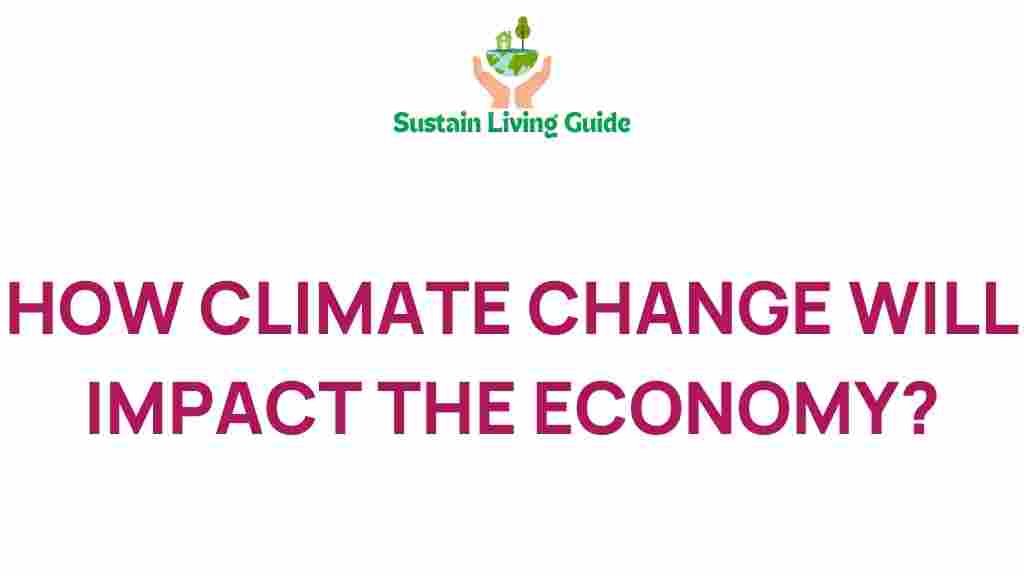How Climate Change Will Transform Our Economy
Climate change is not just an environmental issue; it is a profound economic challenge that will reshape industries, alter job markets, and redefine global trade. As the planet warms, driven largely by human activity, the ripple effects on the economy are increasingly evident. This article will explore how climate change will transform our economy, examining key areas such as energy, agriculture, infrastructure, and job markets.
The Economic Impact of Climate Change
Understanding the economic ramifications of climate change requires a comprehensive look at various sectors. Here are several critical areas that will experience significant transformation:
1. Energy Sector Transformation
The energy sector is at the forefront of the battle against climate change. As we transition from fossil fuels to renewable energy sources, several changes are expected:
- Investment in Renewable Energy: There is a growing shift towards solar, wind, and hydroelectric power. This transition is expected to attract substantial investments, leading to new job creation in green technologies.
- Decline of Fossil Fuels: As countries commit to reducing carbon emissions, the fossil fuel industry may decline. This shift will require workers to adapt through retraining programs.
- Energy Efficiency: Businesses and households will prioritize energy-efficient technologies, creating a demand for innovative products and services.
2. Agriculture and Food Production
Climate change will have a profound effect on agriculture, impacting crop yields and food security:
- Shifts in Crop Viability: Regions that were once ideal for farming may become unsuitable due to changing weather patterns. This will necessitate a reevaluation of agricultural practices.
- Increased Food Prices: As supply chains are disrupted and crops fail, food prices are likely to rise, affecting consumers globally.
- Innovation in Farming: The agricultural sector will need to innovate with climate-resilient crops and sustainable farming practices to combat these challenges.
3. Infrastructure Resilience
As climate change leads to more extreme weather events, infrastructure must adapt:
- Investment in Climate-Resilient Infrastructure: Governments and organizations will need to invest in infrastructure that can withstand flooding, hurricanes, and other climate-related disasters.
- Retrofitting Existing Structures: Older buildings and infrastructure may require retrofitting to improve resilience, creating a market for construction and engineering services.
4. Job Markets and Workforce Development
As industries shift in response to climate change, job markets will undergo significant changes:
- Creation of Green Jobs: The transition to a sustainable economy will create millions of jobs in renewable energy, energy efficiency, and sustainable agriculture.
- Job Displacement: Traditional sectors, particularly fossil fuels, may see job losses, necessitating retraining and support for displaced workers.
- Emerging Skills Demand: New skills will be needed in the workforce, leading to a focus on educational programs that emphasize sustainability and environmental science.
Step-by-Step Process for Adapting to Climate Change
To effectively navigate the economic transformations driven by climate change, businesses and governments need a step-by-step process:
Step 1: Assess Vulnerabilities
Identify which sectors of the economy are most vulnerable to climate change impacts. Conduct a thorough analysis of physical risks, operational challenges, and potential disruptions.
Step 2: Develop a Strategic Plan
Formulate a strategic plan that outlines how to adapt to the changing climate. This plan should include:
- Investment in renewable energy
- Incorporation of sustainable practices in agriculture
- Upgrading infrastructure to withstand climate impacts
Step 3: Foster Innovation
Encourage innovation in products and services that address climate change. This may involve collaboration between businesses, governments, and research institutions.
Step 4: Train the Workforce
Implement training programs that equip workers with the skills needed for green jobs. Focus on sustainability practices and new technologies in various sectors.
Step 5: Monitor and Adjust
Regularly monitor the progress of adaptation strategies and adjust plans as needed. The impacts of climate change are evolving, and strategies must be flexible.
Troubleshooting Tips for Climate Change Adaptation
As businesses and governments work to adapt to climate change, they may encounter challenges. Here are troubleshooting tips to address common issues:
1. Lack of Resources
If funding is limited, consider:
- Seeking partnerships with private sector companies
- Applying for government grants and subsidies aimed at sustainability
- Engaging with non-profit organizations that focus on climate resilience
2. Resistance to Change
Overcoming resistance within organizations can be challenging. Strategies include:
- Communicating the long-term benefits of adaptation
- Involving employees in the adaptation process to foster buy-in
- Highlighting successful case studies of other organizations
3. Insufficient Knowledge
If there is a lack of knowledge about climate change impacts, consider:
- Hosting workshops and training sessions
- Collaborating with experts and consultants in climate science
- Utilizing online resources and courses to enhance understanding
Conclusion
In conclusion, climate change is set to transform our economy in ways we are only beginning to understand. From reshaping the energy sector to altering job markets and agricultural practices, the effects are far-reaching. By proactively addressing these challenges through careful planning, innovation, and workforce development, we can not only mitigate the impacts of climate change but also seize new economic opportunities.
As we move forward, it’s crucial for businesses, governments, and individuals to collaborate in developing sustainable solutions that address the economic challenges posed by climate change. For further reading, you can explore resources from the Intergovernmental Panel on Climate Change and stay informed on the latest developments. Together, we can build a resilient economy that thrives in the face of climate change.
To learn more about how to adapt your business strategies to climate change, check out our detailed guide here.
This article is in the category Eco-friendly and created by SustainLivingGuide Team
